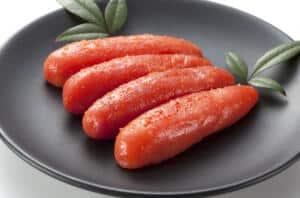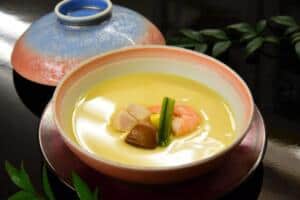Embark on a flavorful journey through the heart of Japanese cuisine with our exploration of the Miso Fermentation Process. Miso, a versatile and beloved seasoning, owes its rich taste and nutritional benefits to a fermentation process. In this article, we unravel the mysteries behind the creation of miso, from the initial inoculation of koji to the aging period. Join us as we delve into the fascinating world of miso production, uncovering the secrets that give this traditional Japanese ingredient its unique flavor profile. Ready to deepen your understanding of this culinary cornerstone?
What is Miso?

Miso is a traditional Japanese seasoning made by fermenting soybeans with salt and koji, a type of fungus (Aspergillus oryzae). It is a key ingredient in miso soup. You can also make this with other grains like rice or barley. The fermentation process can vary in length, typically ranging from a few months to several years, resulting in different flavors and textures. It comes in three main types—white, cream, brown, or dark brown—each differing in color and taste, influenced by factors such as the amount of koji used, salt added, and fermentation duration.
Miso Functionality to Japanese culture

The wide variety of miso types exists because different regions, shaped by their local ingredients, climate, and culinary traditions over time, have each developed their unique versions. Recently, people have become increasingly interested in the health benefits, or “functionality,” of miso. It’s been associated with several well-known advantages, such as preventing cancer, stomach ulcers, and strokes, lowering cholesterol, promoting anti-aging effects, aiding digestion, and regulating the intestines. These benefits stem from the complex properties inherent in miso, which is crafted from soybeans, often called the “meat of the field,” and produced through the action of microorganisms.
Miso Fermentation
To make miso, soybeans are soaked in water overnight and then pressure-cooked until soft. Afterward, the beans are mashed and kneaded together with koji, salt, and water. The blended paste is then packed into a sealed glass jar and stored in a cool, dark place. They will leave this to ferment at temperatures between 25 to 30 degrees Celsius. This fermentation process develops the characteristic flavors and textures of miso, creating a versatile ingredient widely used in Japanese cuisine.
In case of rice miso, steamed rice is mixed with a cultured microorganism called koji starter, then left to grow in a process known as koji making. Afterward, the resulting koji is combined with salt to create what’s called Shio-kiri koji.
Traditional Miso Fermentation Process
Start by inoculating steamed rice with a koji starter, a cultured microorganism. Allow this mixture to grow, a process known as koji making.
Once the koji has finished growing, mix it with salt to create Shio-kiri koji. This step helps regulate the heat of the koji and ensures even salt distribution during preparation.
Combine the steamed soybeans with Shio-kiri koji, salt, and seed water. Optionally, you can add additional salt, vitamins, and cultured microorganisms. Partially crush the mixture using a chopper.
Transfer the crushed mixture into a preparation vessel, ensuring there are no air gaps. Ferment and mature the mixture for a period ranging from a few days to a year, depending on the type of miso being made.
Heat treat the soybeans and rice to denature proteins and gelatinize the starch. This process makes them more susceptible to the enzyme action of the koji mold and removes harmful substances while killing any attached bacteria.
Inside the miso, enzymes produced by the koji mold break down starch and protein into glucose, maltose, peptides, and amino acids. These components contribute to the flavor, sweetness, and nutrition of the miso.
As conditions become favorable, salt-tolerant yeasts grow and produce alcohol, organic acids, esters, and higher alcohols from sugars and amino acids, contributing to the flavor profile of the miso.
Throughout the fermentation process, mold, yeast, bacteria, and enzymes work together to create delicious miso over several days to a year. Controlling temperature, humidity, oxygen, and time during koji making, fermentation, and maturation is crucial for producing high-quality miso.
Benefits of Koji Mold

The benefits of using koji are plentiful. Koji mold is a powerhouse of enzymes, breaking down proteins into amino acids and starch into sugars. This enzymatic activity leads to the creation of numerous flavorful compounds, enhancing the complexity and depth of taste. Additionally, koji generates umami-rich substances like amino acids and sweet sugars. As lactic acid bacteria and yeast thrive on these nutrients, fermentation intensifies, spreading flavor both vertically and horizontally. The resulting complexity is what makes koji-based foods so delicious. While other countries utilize bacteria and yeast in fermentation, the use of koji is distinctly Japanese, deeply intertwined with Japanese cuisine and culture. Koji mold plays a vital role, not only in shaping food culture but also in preserving Japanese heritage.
The key focus lies in generating a significant quantity of enzymes. Various types of koji starters exist, each yielding different effects and flavors tailored to specific purposes like miso, soy sauce, sake, and shochu production. These starters represent pivotal fermentation bacteria, harnessing their microbial prowess to craft the rich umami flavors and health benefits found in fermented foods.
Japanese Fermented Foods uses Koji

Japanese fermented foods are characterized by their use of “koji,” a mold cultivated on rice, wheat, soybeans, and other grains. According to Ministry of Agriculture, Forestry and Fisheries, this koji mold is central to the production of various staples like soy sauce, miso, mirin, vinegar, sake, and shochu. While the origins of koji can be traced back to China, in Japan, it began to be predominantly made from rice. There are several theories about its origin. This includes rice offerings to the deceased or its unique development in Japan’s humid climate.
Regardless, the use of rice for koji enabled significant advancements in fermentation technology. Rice miso became widespread, leading to the development of unique miso varieties across different regions. Soy sauce production involves cultivating koji and then fermenting it in saltwater, resulting in the creation of flavorful, aromatic soy sauce. Similarly, sake brewing relies on koji cultivation, with continuous exploration into refining its taste leading to the creation of diverse sake and shochu varieties throughout Japan.
Timeframe when Homemade Miso is best Aged

Miso reaches its peak flavor between 10 and 12 months of aging. The changes that occur during this time are essential to its taste. While these timeframes serve as guidelines, factors like temperature and storage location can influence the outcome. Miso fermentation is a natural process, unaffected by human intervention. Although there are various methods and personal preferences in miso making, many agree that homemade miso achieves its best flavor when aged for approximately 10 months.
Summary

In conclusion, understanding the Miso Fermentation Process sheds light on the intricate art of Japanese culinary tradition. Through the careful cultivation of koji, the precise combination of ingredients, and the patient aging process, miso has evolved into a flavorful staple of Japanese cuisine. By delving into the nuances of fermentation, readers can appreciate the depth of flavor and nutritional benefits that miso offers. Hopefully, this exploration has provided valuable insights into the journey from simple ingredients to the complex umami-rich seasoning known as miso.
You can check some Japanese miso dishes that we know you would like to try too.
















Comments